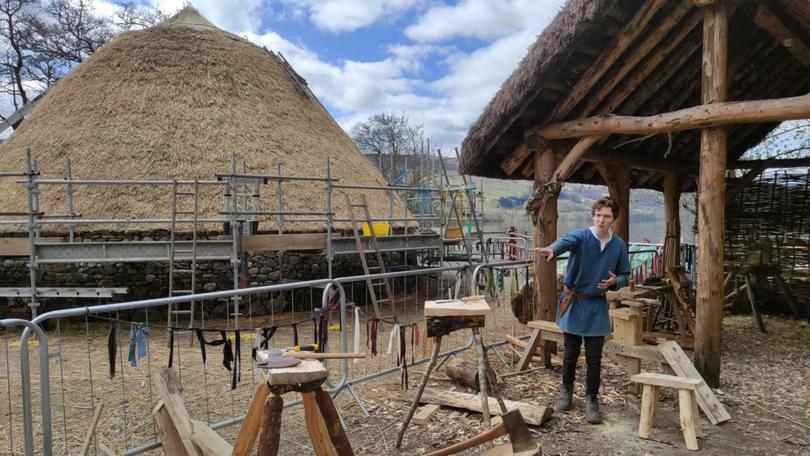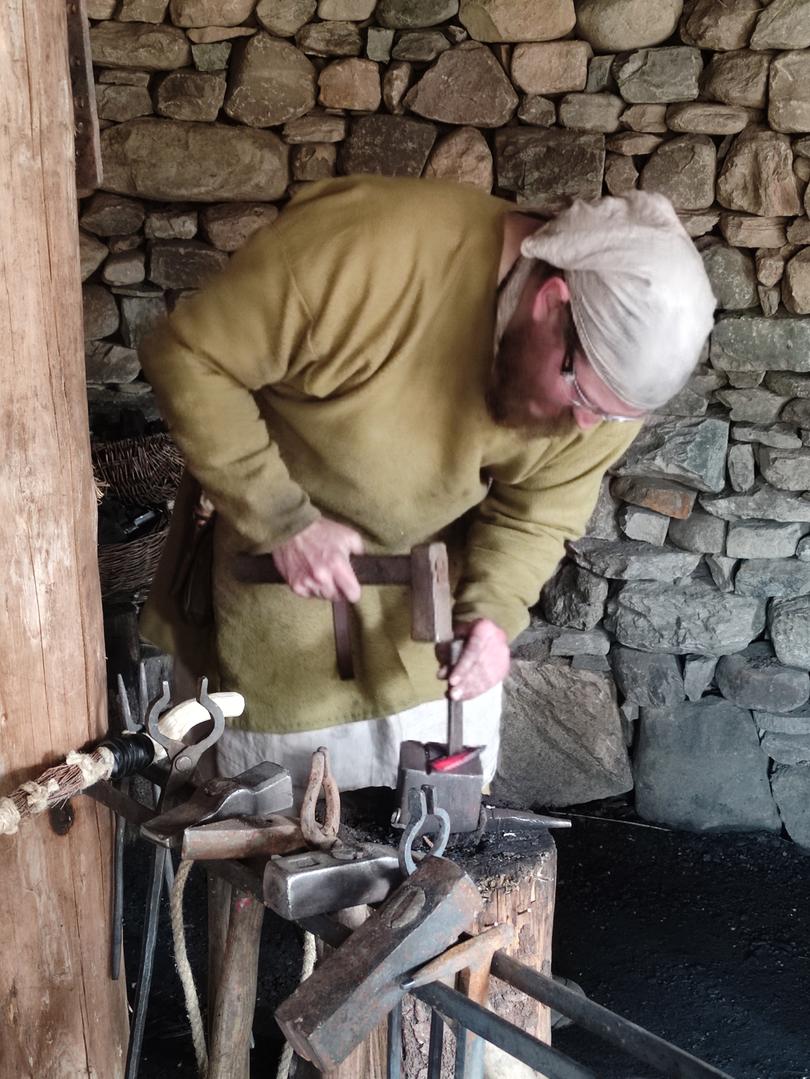Forget Edinburgh and Glasgow, head to the beautiful Loch Tay in Perthshire for a touch of ancient Scotland

There are individual galleries in the big museums of Edinburgh and Glasgow with more floor space than the Scottish Crannog Centre.
But few are as compelling as this family-friendly attraction by Loch Tay, a beauty spot in Perthshire about a two-hour drive north of Scotland’s two largest metropolises (and an hour from the city of Perth).
Entertaining and educational, staffed by welcoming and personable characters, the centre immerses you in the Iron Age, a long-forgotten era, when many Scots would have lived in crannogs — stilted artificial islands mainly formed of timber and providing refuge from rival tribes and the bears and wolves that roamed wild in the forests of Alba, as this nation is called in Scottish Gaelic.
It’s thought that in about 500BC — “about 89 grandmas ago,” says Rich Hiden, the centre’s assistant director — around 17 crannog sites edged this loch, the sixth largest in Scotland by area.
ROAM. Landing in your inbox weekly.
A digital-first travel magazine. Premium itineraries and adventures, practical information and exclusive offers for the discerning traveller.
By continuing you agree to our Terms and Privacy Policy.The centre recently reopened after a devastating fire in 2021, which burned its replica crannog roundhouse to ashes. Reborn in a new, significantly more spacious location, the centre is a short drive from the postcard-pretty lochside village of Kenmore and also close to the whisky-making town of Aberfeldy.

“The fire reinforced the fact that life is uncertain but also how you can try to build resilience to uncertainty and vulnerability,” says Rich’s colleague, co-director Rachel Backshall. “The people who lived in the crannogs would have faced famine, disease, war, failed harvests, but they would have tried to carry on the best they could.”
Explaining that the centre works closely with local charities that support disadvantaged youth, victims of domestic violence and abuse, mental health and refugees, Rachel walks us through the centre’s small museum, which has carbon-dated exhibits excavated from the banks of this and other crannog-fringed Scottish lochs.

“We’re finding pottery, leather and textiles and other items from 2500 years ago,” says Rachel, pointing out a wooden foot plough, a dish with crumbs of dried butter, broken pieces of pottery embedded with human fingerprints and even hazelnuts with what’s believed to be nibble marks from mice.
Outside the centre, which has a cafe and bookshop, work is ongoing to build three new replica crannogs, which will jut from the loch and be accessible by wooden platforms.

Already constructed, on dry land, is a bunch of stone and timber huts hewn by woodworkers, masons and thatchers to form a kind of Iron Age hamlet. Inside the huts, interpreters in period costumes explain ancient crafts and customs to visitors. In one dwelling, by a crackling fire, we learn about food, foraging and seasonality and are given parsnip and garlic flatbreads to try.
Another hut, clustered with belt hooks, knives and cloak pins, has a red-hot forge where a blacksmith is crafting tools that can be used on site. Entering another dwelling, decorated with woven baskets and jewellery, we hear about Iron Age fashions and how folk would have coloured their clothes with natural dyes mined from plants and berries.
Demonstrations change depending on the season and Rich, the centre’s assistant director, says visitors can also enjoy storytelling sessions, performances of traditional music, scavenger trails and walks in the woodlands that rise above this beautiful loch, which you can also savour on boat cruises (the jetty for those is a 20-minute drive west of the centre).
As you drift across the loch, you’ll be able to spot a very different kind of property — the luxury hillside mansion that Ed Sheeran is rumoured to have purchased. The singer is known to love the area and paid tribute to it in his 2023 song The Hills Of Aberfeldy.
+ Steve McKenna was a guest of Visit Scotland. They have not influenced or seen this story.
Tickets to the Scottish Crannog Centre include a guided tour and interactive demonstrations. Admission is £15 ($29) for adults, £12.50 ($24) for concessions and £10 ($19) for children. Family tickets are also available. See crannog.co.uk + For more information on visiting Scotland, see visitscotland.com
